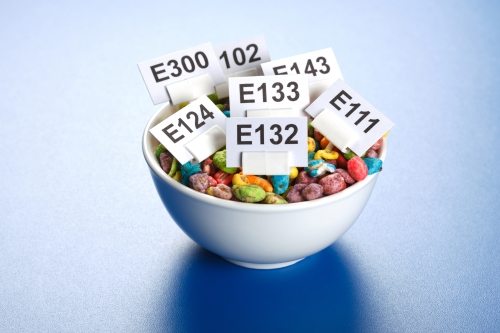About 34% of 510 households in Germany perceived additives such as artificial colorings as their chief nutritional concerns, according to a survey conducted by TÜV SÜD.
About 28% of respondents said they were most worried about food spoilage such as mold, and 26% about pathogens like salmonella.
Experts agree that food spoilage through mold or pathogens can constitute a high risk to human health, particularly on hot summer days.
However, they generally draw different conclusions with respect to additives, instead placing unhealthy lifestyles with excessive calorie intake and insufficient exercise at the top of the risk list.
The company said that it is unquestionable that in addition to containing a wide range of nutrients and ingredients, foods may also conceal undesirable substances with which they come into – often unavoidable – contact during production, storage or transport.
Regulatory measures for food safety
However, the European Union has a dense network of precautionary calculations, laws and directives in place to provide maximum consumer protection.
Maximum amounts and limits are applied to evaluate the health risks before additives and other substances are approved for use in foodstuffs.
“A wealth of data from science and official sources is drawn on to evaluate health risks involving these substances, and thus calculates limits for them,” says Dr Andreas Daxenberger, food expert at TÜV SÜD.
“The data are used to define intake levels at which consumption must be free from undesirable reactions.”
“This level is then generally reduced by a safety factor of 100, resulting in a tolerable amount of the additive substance that allows lifelong daily consumption without harmful effects.”
This amount is also known as the acceptable daily intake or ADI.
Food safety authorities, manufacturers and independent testing institutes take action whenever there is a threat of one of these limits being exceeded, even if no acute danger to human health would result.
Read labels for presence of artificial food colors
The requirement of declaration of additives is important for all those suffering from genuine allergies and sensitivities.
The statutory declaration of ingredients on food packaging must be listed in order of quantity, so that artificial colorings, for example, are generally far down the list.
Consumers can easily avoid buying products containing artificial colorings by examining the declaration of ingredients.
A glance at these lists shows that artificial colorings are generally used only rarely today; in recent years many of them have been replaced by foodstuffs with the same colorant properties (such as paprika powder and beetroot) or by additives from natural sources.
It is recommended, particularly in the summer season, to focus on fresh regional produce in the kitchen, thus practically automatically eliminating concerns about artificial additives.










